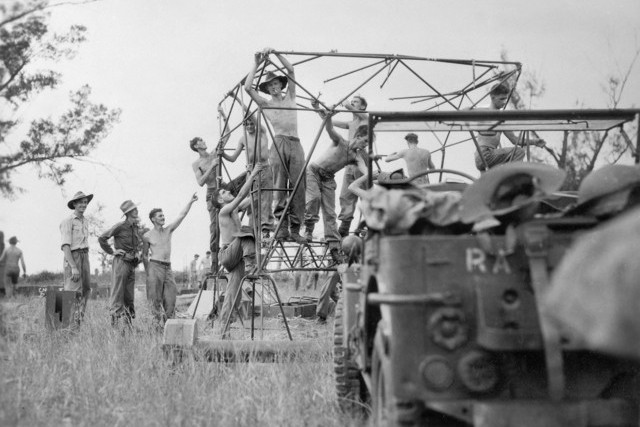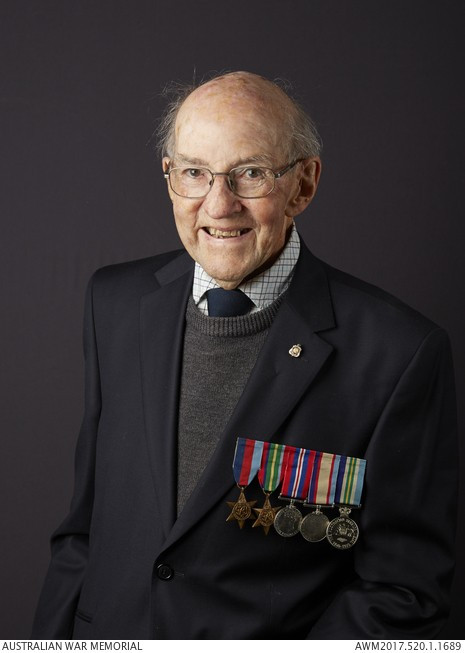General News
29 January, 2022
Veterans' Voices: Gilbert Le Plastrier
Leading Aircraftman Gilbert Charles Hector Le Plastrier was born on 17 June 1925.

By the Horsham RSL Sub-branch, Military History & Heritage Group
LEADING Aircraftman Gilbert Charles Hector Le Plastrier was born on 17 June 1925 at Hawthorn, Victoria. His next of kin on his Nominal Roll was Horace Le Plastrier. His mother was Euphemia Jane.
His date of enlistment was 4 February 1944 in Melbourne, Victoria. His locality on enlistment was Horsham, Victoria. Gilbert's date of discharge was 29 April 1946. His posting at discharge was South Airforce HeadQuarters.
From Trove newspaper on Friday 3 October 1952 it states that Mr Gilbert Le Plastrier M.P.S. Ph. C. has begun work at Barnes Pharmacy as an assistant manager, after having spent two months relieving in Queensland and New South Wales.
Read more: Field days cancelled
Gilbert served at No 342 Radar Station which was located at several locations during World War Two, Mascot NSW; Mount Spec QLD; Townsville QLD; Castlereagh NSW; Archerfield QLD; Morotai Indonesia and Lauban, Borneo. Gilbert was photographed at Lauban, Borneo operating radar equipment.
Newspaper entry from 16 May, 2017:
‘Gilbert Charles Hector Le Plastrier 17.6.1925 - 14.5.2017. Passed away peacefully at Wimmera Base Hospital. Loving husband of Betty. Much loved father of Simon, Philip, Fiona and John. Father-in-law of David and Sally. Grandfather of Penny, Sophia, Anthony, Megan, Angus, Hamish, Annabel and Emma. Now resting in God's care.’
RADAR STATIONS
The RAAF established Radar Stations during WW2 in Australia and New Guinea in order to provide early warning of enemy air attacks, and to a lesser extent seaborne attack, around the coastline and key inland installations.
Their locations varied over time as they were often relocated for a variety of reasons. Equipment was obtained from a number of sources including the UK and Canada. Equipment was obtained from a number of sources including the UK and Canada. Some US installations later complemented the RAAF stations.
Compiling the history of the RAAF’s air defence radar units was aimed at establishing links between the old and the new generations. A veil of secrecy engulfed the very existence of radars and the activities of radar stations during the war ensured the effective employment of outposted units, their units and their radar.
The maintenance of strict security precautions contributed significantly towards the survival of many units which were deployed well forward of the Allied Forces. The secrecy that surrounded wartime radar activities and post-war imposition of the Official Secrets Act denied the radar personnel the opportunity to express pride in their operational achievements and to describe the challenges, rigors, and hardships that they faced.
Radar Yarns, edited by Ed Simmonds, writes about the memories and stories collected from personnel who served in the RAAF ground-based radar in World War 2.
The book is dedicated to those who died while serving in the RAAF radar or who have subsequently died because of their service in radar, as well as those members of both RAAF and WAAAF who served on radar establishments.
Read more: ‘Busier than expected’: Horsham butchers faring well amid national food shortage
Learning and writing about these experiences was even more significant as it increased the awareness of the wartime exploits and activities of the personnel at the radar stations. These radar stations were effective fighting units no matter where they were located and these units contributed significantly towards the defence of Australia at a time when the outcome of the war looked exceedingly bleak.
Maintaining the operational effectiveness of the radar network was a vital part of the war effort in the South-West Pacific Area that demanded the deployment of personnel to areas which caused challenges and hardship together with the isolation of posts, which were often remote radar stations in very inhospitable areas. Loneliness and preservation of a rational outlook on life was always a challenge.
Many lives were saved by the timely warning of air attacks.
The introduction of radar to active service in the RAAF occurred as late as 22 March 1942 during the defence of Darwin. By the end of the war the RAAF had over 140 Radar stations stretching across the South West Pacific region including the Australian mainland, New Guinea, Trobriand Islands, Admiralty Islands, Borneo and Dutch East Indies. The establishment of the early warning network which provided surveillance along the vast continental coastline while maintaining a focus to Australia’s north.
Personnel were trained at No1 Radio (later radar) school at the RAAF Base, Richmond NSW and made the network of radar stations an invaluable part of Australia’s fighting forces.
